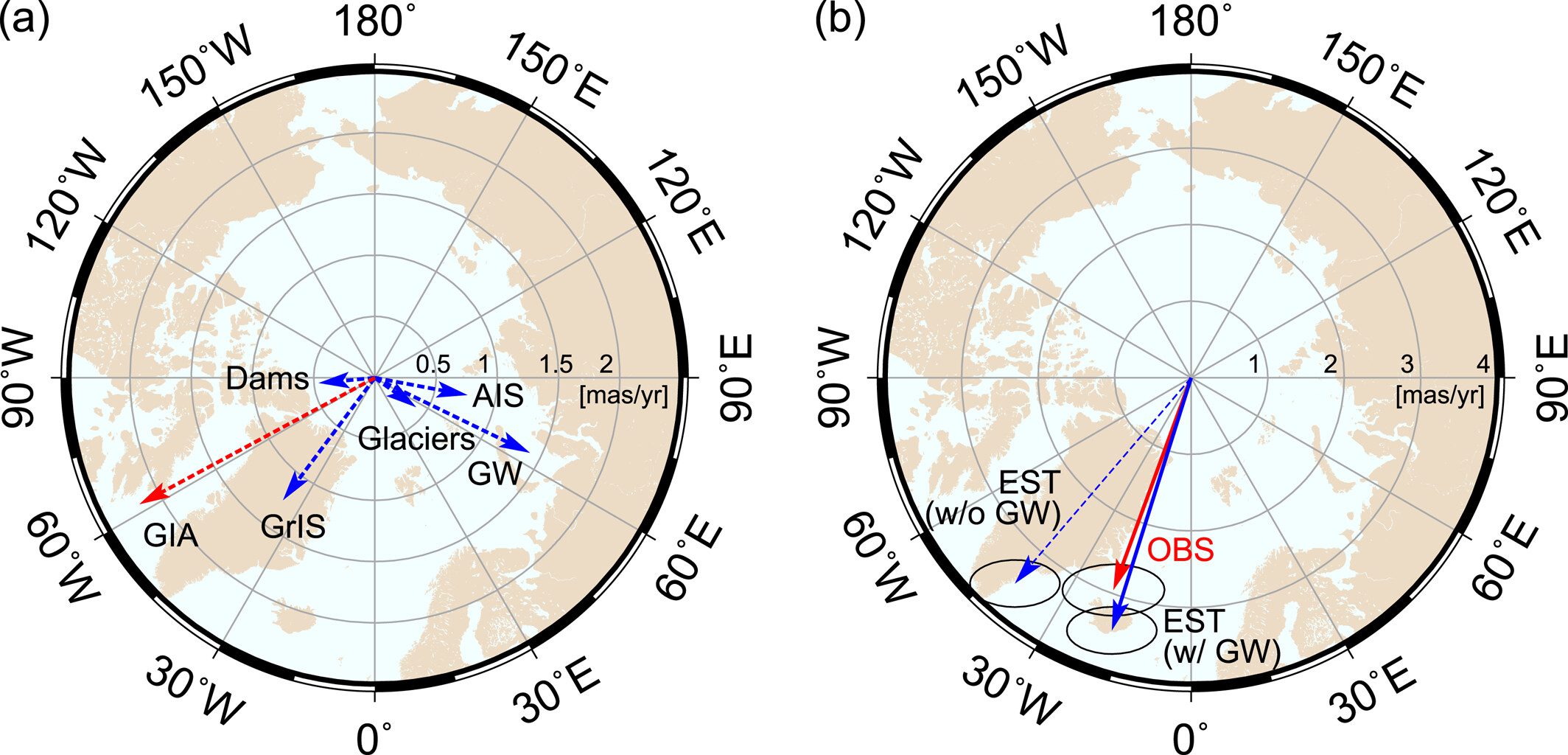The overuse of groundwater isn’t just a concern for areas that may soon run out of the substance they depend on the most, it’s literally affecting the whole planet. That effect can be measured by observing changes in the locations of the North and South Poles, which a new study reveals shifted almost 80 centimeters (31.5 inches) in 17 years. If that doesn’t sound like much, consider the mass of the object that we’ve been tilting.
Like anything that spins, the Earth’s rotation depends on its mass distribution. Move the mass to the center and it speeds up, or to the periphery and it slows down to maintain angular momentum. Similarly, if mass is moved to one side only, the tilt will change to compensate.
Every time you fly off for a tropical holiday you change the Earth’s spin slightly, restoring it (the indirect effect of carbon emissions aside) when you return. However, as you might expect, these changes are imperceptible. Not so the movement of trillions of tonnes of water. In 2021 scientists attributed a change in the Earth’s tilt to the melting of polar ice caps. Evidence now reveals a subtler factor is also at play: groundwater extraction.
Both studies rely on data from the Gravity Recovery and Climate Experiment (GRACE), a US/German mission that tracks the gravity of points on the planet as it passes over them. GRACE has operated since 2002, but previous data has been used to create a picture of planetary spin dating back to the 1980s.

The sum of the polar motion excitation trend contributors with (solid blue) and without (dashed blue) groundwater depletion. Red arrow is the observed polar motion excitation.
Image Credit: Seo et al., Geophysical Research Letters 2023
Throughout the time we have been monitoring, Earth’s poles have been moving relative to the continents above, but the rate changed direction and accelerated dramatically in the mid-1990s. This has been attributed to vast quantities of polar ice melting and raising sea levels, causing a redistribution to the equator. That makes a much bigger difference than your winter holiday, no matter how much luggage you take, and unfortunately, the ice isn’t coming back any time soon.
Something similar, but more complicated, happens when groundwater is drawn up. Although the water is initially mostly used for local agriculture or industry, once brought to the surface much of it evaporates or flows into rivers, usually ending up in the oceans.
Past calculations suggest this groundwater removal should have added 6 millimeters (0.24 inches) to sea levels between 1993 and 2010. However, that’s only about 10 percent of the rise observed over that time. Melting ice and thermal expansion are bigger factors, making it hard for us to determine if we have each contribution right.
That’s where GRACE comes in useful. The additional seawater shifts the pole, but the shift is different depending on where it comes from.
“Earth’s rotational pole actually changes a lot,” said Ki-Weon Seo of National University in a statement. “Our study shows that among climate-related causes, the redistribution of groundwater actually has the largest impact on the drift of the rotational pole.”
Seo and co-authors modeled how the poles would have moved relative to the continents based only on ice melt. As anticipated, this didn’t match observations, so they added in various scenarios for groundwater extraction. When they used a previously estimated figure of 2,150 gigatonnes, the model closely matched reality. Without this effect, the Earth’s pole would have been pointing 78.5 cm west of where it is, a rate of movement of 4.4 cm (1.7 inches) a year, similar to the rate at which continents move. The pole is edging towards Iceland, instead of central Greenland as it would be otherwise.
Groundwater extraction is harder to model than ice melt partly because it’s so widespread. However, the bulk of water pumped during this period has been in two regions of major scarcity – the western United States and Northern India, which are at similar latitudes.
In theory, if we move the pole enough, we could end up altering the seasons. The north pole is getting closer to the UK, for example, but that isn’t a danger for a long, long time. Instead, the concerning thing about the findings is that they validate what has been suspected about the rate at which we’re using up one of our most vital resources. The contribution of groundwater to drowning low-lying lands is also a more immediate problem. Ironically, this can sometimes take the form of seawater infiltrating groundwater, particularly on islands, turning it salty.
The study is open access in Geophysical Research Letters.
Source Link: Humans Have Extracted So Much Groundwater It Tilted The Whole Earth